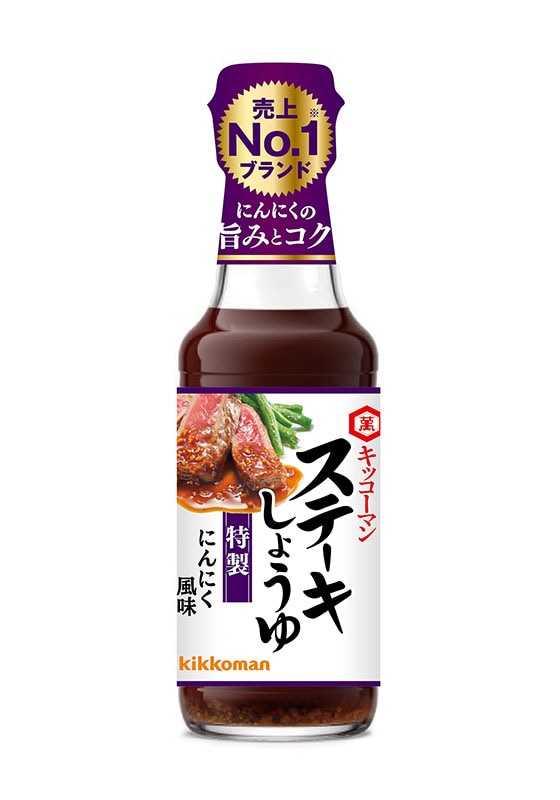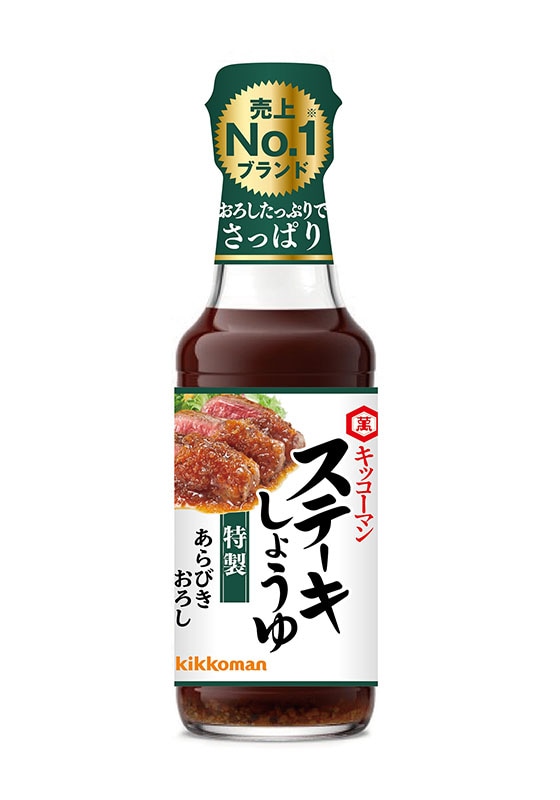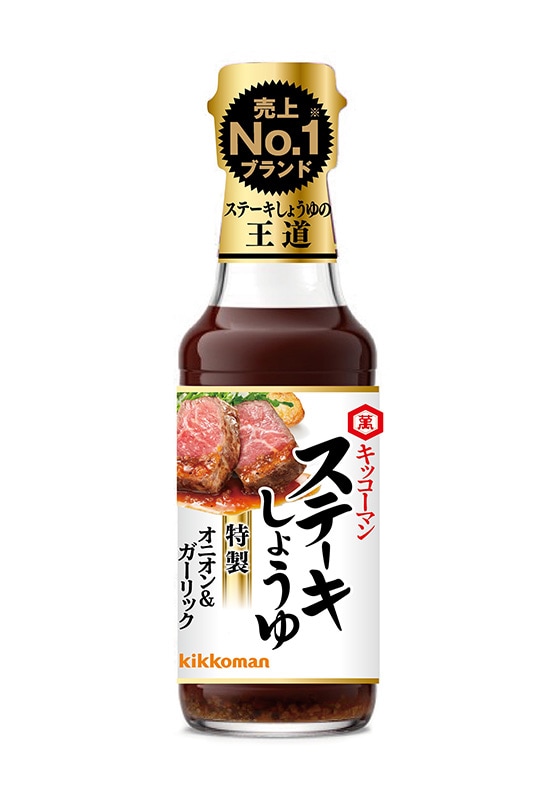Eco-Friendly Products
Kikkoman Group Initiatives
In March 2008, the Kikkoman Group formalized the “Kikkoman’s Guidelines for Containers and Packaging” to clarify the Group’s approach to enhancing convenience and safety for consumers, and decreasing environmental impact by reducing container and package weight, and increasing recycling.
Kikkoman’s Guidelines for Containers and Packaging
The Kikkoman Group will procure, develop, and commercialize containers and packaging with low environmental impact that are suitable for production, transportation, storage, and sales, and which are also safe and easy for consumers to use.
- 1Reduce weight of containers and packaging.
- 2Introduce and use returnable containers and packaging for our products.
- 3Consider applying shapes, designs, and materials to containers and packaging that facilitate sorted collection and reuse. Promote repackaging current products in new containers and packaging in compliance with the relevant laws and regulations of each country.
- 4Make greater use of sustainable resources.
- 5Increase procurement from environmentally conscious suppliers and vendors.
- 6Use materials with chemical compositions and shapes that have been verified as safe for humans.
- 7Develop new containers and packaging that reflect customer requests, as well as purchase and usage patterns.
- 8Develop containers and packaging with universal designs to facilitate use by a diverse range of customers.
History of Environmental Initiatives for Soy Sauce Containers and Packaging
Soy sauce has been around for a long time. If we take a look at the path of containers and packaging over its long history, we can see that careful consideration and efforts were being made to reduce environmental impact.

(Kikkoman Institute for International Food Culture Collection)
Japanese wooden barrels made from cedar planks were utilized as “recyclable (returnable) containers”, washed and reused from the early Edo period.
Glass (Bottles)

Glass beer bottles from Europe began to be imported in the Meiji period, and from the mid-Taisho period these became extensively used as soy sauce bottles as well.
Glass bottles were not only reusable containers (returnable containers) after washing, but the glass fragments (cullet) from used bottles could also be melted down and recycled, making this a highly eco-friendly container.
Since implementing bottles in 1918, Kikkoman also has been carrying out intensive efforts to improve strength and reduce required glass amounts, while continuing to use these containers for a portion of industrial-use and food processing-use products.
Metal (Cans)

(launched in 1920)
In 1920, for the first time, Kikkoman adopted a 1 Gallon (about 3.8 L) size can as a container for its soy sauce (soy sauce for export). As with glass bottles, cans are also a highly recyclable and eco-friendly container.
In the same manner as for glass bottles, Kikkoman also has been carrying out intensive efforts to improve strength and reduce required metal amounts for cans as well, while continuing to use these containers (including the 18 L / 19 qt can) for a portion of industrial-use and food processing-use products.
First in Japan’s Food Industry to Adopt Plastic Bottles

Due to the sudden growth of nuclear families and supermarkets, soy sauce containers became increasingly smaller and lighter, and began to transition from glass to plastic in the 1960s. While implementing container improvements, Kikkoman became the first in Japan’s Food Industry to adopt polyethylene terephthalate (PET) containers, launching products of 500 ml (16.9 fl. oz.) size in 1977, and 1 L (1.1 qt) size in 1978. Thereafter, several food manufacturers began to adopt PET containers.
After adopting plastic, Kikkoman has been collaborating with container manufacturers to improve thinness (reduce usage of resource materials and weight), strength, ability to maintain quality and recyclability of our plastic bottles.
Use of an Eco-Cap for Easy Bottle and Inner Stopper Separation

It was easy to remove caps for separation when recycling plastic bottles, but the inner stopper could not be readily removed without the aid of a tool, making separation of the bottle and inner stopper difficult.
As a solution, in 1999 Kikkoman collaborated with a container manufacturer to develop a cap that made it easy to separate the inner stopper.
Introduction of a New Eco-Cap

In 2009, we developed a new eco-cap based on consumer feedback.
・Easy to hold, easy to open and close one-touch type
・Easy to remove inner stopper
・Easy to pour, drip-free spout
・Easy to remove from bottle for disposal (recycling)
Sequential Introduction of Airtight Eco-Bottle for the “Always Fresh Series”
In 2018, we developed an airtight eco-bottle that switched the main material for the “Always Fresh Series” from polyethylene (PE) to polyethylene terephthalate (PET).
Currently we have adapted this eco-bottle for all 620 ml (21 fl. oz.) and 450 ml (15.2 fl. oz.) items.
・Used an easy to peel off label and cap that can be quickly removed by simply twisting to the right
・Container is easily recyclable after usage
・Reduced weight by approximately 10% in comparison to the former container (soft airtight bottle)


Examples of Eco-Friendly Products
The Kikkoman Group is carrying out initiatives to develop containers that not only decrease environmental impact but are also safe and easy-to-use for consumers, and contribute to realizing a sustainable society.
Lightweight Containers and Packaging
The Kikkoman Group is working to reduce the weight of containers and packaging. In FY2022, Kikkoman reduced the weight of the glass bottles used for “the Steak Soy Sauce” series by approximately 14.7%.



Use of FSC®-Certified Paper for Containers
 Package made with FSC-certified paper
Package made with FSC-certified paperKikkoman uses paper packaging for many of its products and as such strives to minimize our paper usage and improve the quality of paper used. As part of these efforts, the Kikkoman Soyfoods Company uses FSC-certified paper for soymilk product containers.
- ※ FSC-certified paper: Paper certified under a global standard that verifies materials provided from properly managed forests in terms of environmental and social sustainability have been delivered to consumers through appropriate processing and distribution.
Use of Biomass Ink for Product Labels

Beginning in FY2019, Kikkoman Food Products Company started using biomass ink for product labels. Biomass ink is made partially with materials sourced from cotton, pulp, rice bran, and other plant-derived resources (biomass), making it more environmentally friendly than conventional ink, which is primarily made from petroleum-based materials.
Launch of Label-Free Tomato Juice Bottles

In May 2022, Nippon Del Monte Corporation began selling No Salt Added Tomato Juice without any labels attached to the bottles. Information for this product (only available online) is listed on each outer case of 12 bottles, making it possible to abbreviate product information displayed on each bottle. This initiative results in reduced plastic use for individual labels, and also makes it easier for consumers to recycle the bottles.
Reduced Packaging Loss

In 2023, Siam Del Monte, located in Thailand, solved an issue of deformation due to water absorption that had been occurring in Creamy Tomato Soup and other carton packaged products, reducing packaging loss from 1.19% to 0.86%.

In addition, by removing inserts used in the top and bottom of corn product carton packages, corrugated cardboard usage was reduced by 10.86%.
Switch to 100% Biomass Plastic Materials for Hygiene Monitoring Test Kits

Right: LuciPac Hygiene Kit
Kikkoman Biochemifa Company has changed to plastic linked to 100% biomass feedstock by incorporating the mass balance approach※1 for the raw materials used in the “LuciPac” hygiene testing kit. Switchover began in September 2023 and is being carried out sequentially.
(※1) During the stages from raw materials to processing into products and logistics, this approach allocates raw materials with a certain characteristic (e.g. biomass-based raw materials) and those without (e.g.petroleum-based raw materials), when mixed, as portions of the product according to the input amount of the raw material with the certain characteristic.
Plant-Based Plastic Adopted for Kikkoman Soymilk Straws

In 2024, Kikkoman Soyfoods switched the straws used in its 200 ml Kikkoman Soymilk packs to biomass plastic made from plant-based materials (derived from sugarcane). Biomass plastic is produced from renewable organic resources such as plants and is considered carbon neutral. This change is expected to reduce petroleum-based plastic usage by approximately 125 tons annually.
Partnerships and Cooperation with External Organizations
Participation in the “Declaration of Resource Conservation Challenge”
Kikkoman Corporation is participating in the "Declaration of Resource Conservation Challenge" endorsed by nine prefectures and cities in Japan.
The challenge aims to promote the reduction and recycling of one-way plastic products, containers and packaging, and food waste in the Tokyo metropolitan area and surrounding cities.
Kikkoman's Challenge for the Declaration of Resource Conservation (FY2024)
- 1Strive to use sustainable raw materials. Also, examine feasibility and apply product designs and materials that are easy to sort and recycle.
- 2Develop products that reduce CO2 emissions, plastic usage, and other environmental impacts across the value chain, from development and raw material procurement through to end-user use.
In FY2024, we expanded the use of biomass resin for product packaging, adjusted carton specifications and improved ease for peeling off lightweight shrink labels.
We will continue to implement initiatives that are in line with this declaration.
Participation in “Declaration of Action on Plastic Recycling”
Kikkoman Corporation takes part in the “Declaration of Action on Plastic Recycling” launched by Japan’s Ministry of Agriculture, Forestry and Fisheries from November 2018. Under this declaration, the Ministry of Agriculture, Forestry and Fisheries compiles examples (activities related to reduction, reuse and recycling) of policies and initiatives for plastic waste undertaken by industry organizations and companies using plastic products, containers and packaging in the food production, food logistics, food retailer, restaurant and other related sectors. These are then showcased to highlight the various issues caused by plastic waste and the importance of methods to address those issues, aiming to extensively promote action throughout society and amongst citizens.
